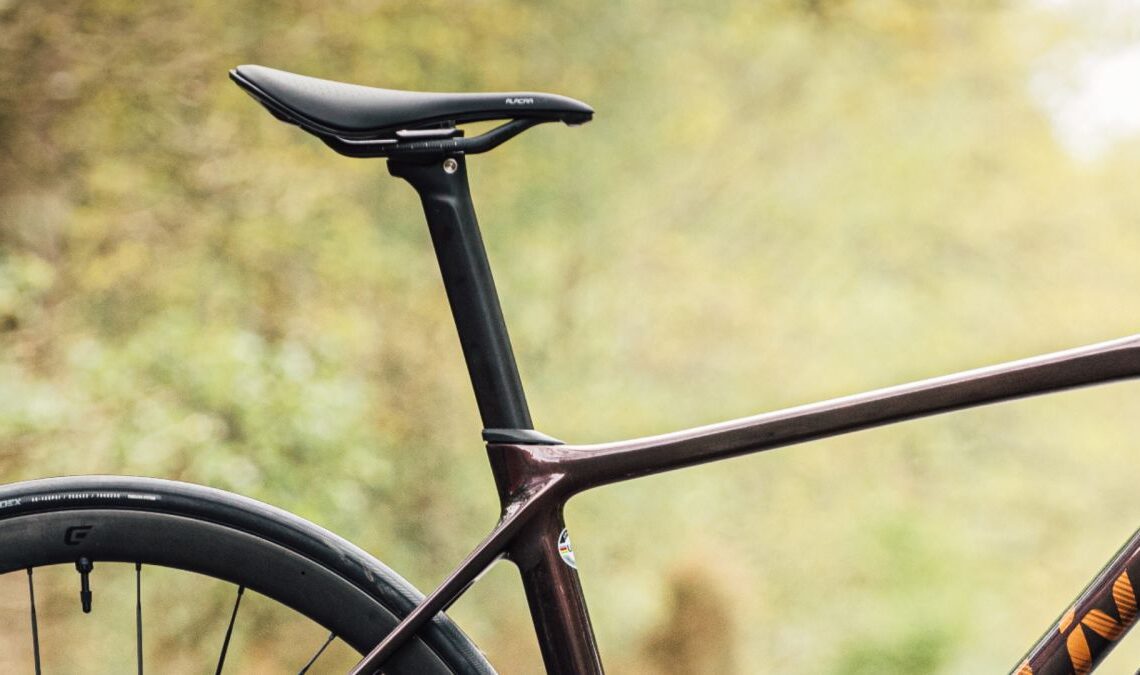Saddle setback, also known as saddle fore-aft, is the horizontal distance between the centre of the bottom bracket and the front of the saddle. This measurement will be influenced by the length of the saddle, which needs to be considered when comparing setbacks on different bikes if a different saddle is used.
Read on to find out how saddle setback is measured, why it’s important to get this bike fit parameter right, and tips on how to set the correct saddle setback.
How is saddle setback measured?
(Image credit: Future)
There are various ways to measure setback.
Placing the vertical line of a laser through the centre of the bottom bracket then measuring the distance to the tip of the saddle is the method I use in clinic. A plumb bob can also be hung from the tip of the saddle and the distance from the centre of the bottom bracket measured.
If you do not have any equipment, setback can be measured by placing the back wheel against a wall and measuring the horizontal distance from the wall to the centre of the bottom bracket and then again to the tip of the saddle then calculating the difference.
Why is correct saddle setback important?
(Image credit: Future)
Saddle fore-aft is the main adjustment affecting weight distribution on the bike and how much upper body work is needed to stabilise the body under load. The goal is to unload the upper body and hands to prevent expenditure of excess energy through tension in the upper body and allow efficient breathing. Uneven weight distribution between the handlebars and saddle can also cause discomfort and injury at the contact points.
Correct saddle fore-aft will also promote good weight balance between front and rear wheels. Road bikes are designed to handle best when 55 per cent to 60 per cent of bicycle and rider weight is on the rear wheel and 40 per cent to 45 per cent is on the front wheel. This will enable good handling and control when descending and cornering.
An ideal saddle setback will allow the muscles of the pelvis and the lower limb to produce power more effectively by sharing load evenly among the major muscle groups. How far forward or back the saddle is placed will change the relative contribution of the quads, hamstrings and glutes. It needs to be based upon a combination of the cyclist’s flexibility, strength, bias to use certain muscle groups, and injury history.
Hip angle is also influenced by saddle setback. The more forward the saddle, the more open the hip angle is (less hip flexion) and…

